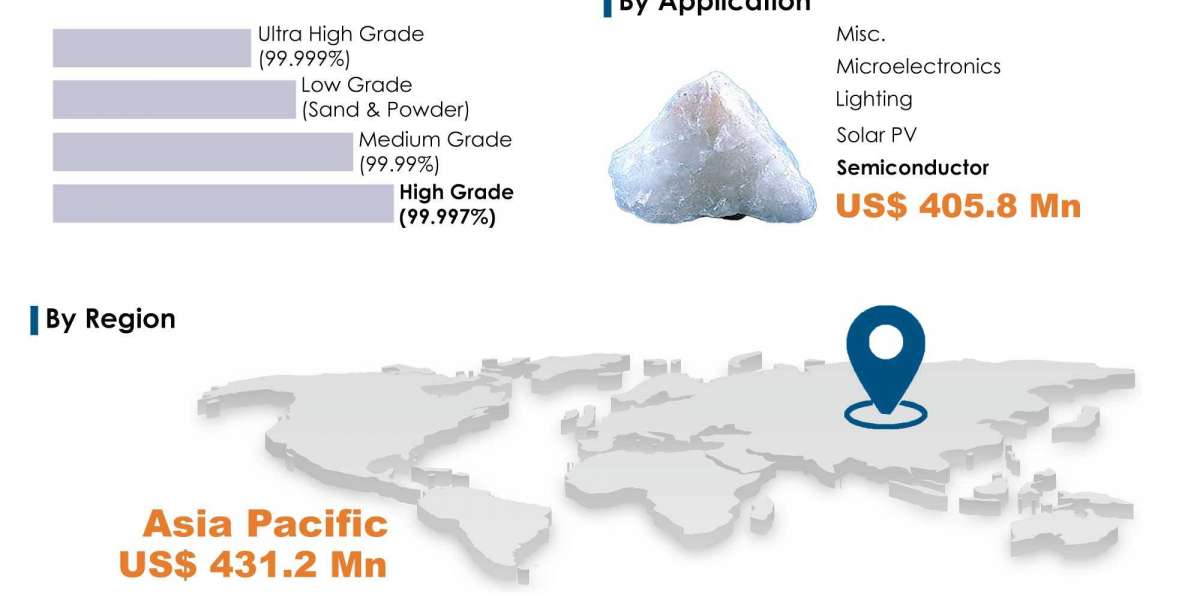The high purity quartz market in Egypt is experiencing robust growth, with a projected value of US$1.13 billion by the end of 2025, as highlighted in the latest report from Fairfield Market Research. The market, which was valued at US$705 million in 2017, is expected to achieve a significant compound annual growth rate (CAGR) of 7.5% during the forecast period from 2021 to 2025.
High purity quartz (HPQ) has emerged as a critical material in various high-tech applications, including microcrystalline solar cells, semiconductor fused quartz, microelectronics, fiber optics, and high-intensity lighting tubing. With its exceptional chemical composition, consisting of over 99.99% SiO2 and minimal metal contaminants, the demand for high purity quartz in the production of electronic components has been steadily increasing.
Read More: https://www.fairfieldmarketresearch.com/report/global-high-purity-quartz-market
In 2018, the global production of high purity quartz reached an estimated 100,000 metric tons, with the solar and semiconductor industries playing a dominant role and accounting for over 75% of the market revenue. The growing number of fabrication facilities, particularly in the electronics sector, has significantly contributed to the rising demand for high purity quartz.
The market faces challenges due to concentrated supply sources and high product prices, with Spruce Pine in North Carolina, USA, and Kyshtym in Russia accounting for over 90% of the total production. While manufacturers are exploring alternative deposits in countries such as Australia, Russia, Canada, and Mauritania, the quality falls short of the industry-standard benchmark, IOTA®. Overdependence on US quartz deposits and unexpected supply chain bottlenecks pose risks to the solar PV industry, which heavily relies on imports.
Egypt has emerged as a significant consumer of high purity quartz, driven by its advanced semiconductor and solar PV facilities. The country's commitment to renewable energy sources, as exemplified by initiatives like "The Paris Agreement," has further fueled the demand for high purity quartz in the solar energy sector. With cumulative solar capacity reaching 583.5 GW in 2019 and double-digit growth expected over the next decade, high purity quartz remains crucial in the production of solar PV wafers.
In Egypt, the high purity quartz industry is actively seeking disruptive technologies to address the current energy-intensive and environmentally unfriendly processing methods. Innovations such as the technology developed by Golovach Quartz in Vietnam, which enables the recycling of reagents without hazardous waste production, offer cost-competitive and eco-friendly solutions. These advancements have the potential to reshape the industry, reducing waste and production costs.
Most companies in the industry are privately held and engage in contractual agreements with end-users. The prices of high purity quartz are primarily influenced by quality and purity, with demand expected to outpace supply in the coming years, impacting prices in Egypt.
As the high purity quartz market in Egypt continues to grow, it presents opportunities for local businesses, investors, and stakeholders to contribute to the industry's success and drive economic growth in the country.
More Information: https://www.fairfieldmarketresearch.com/





